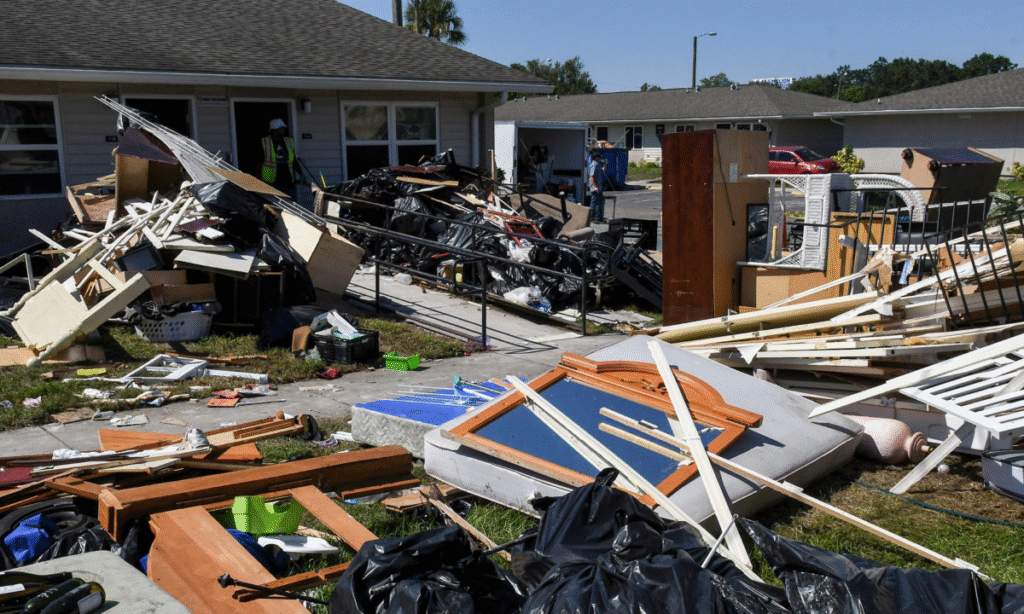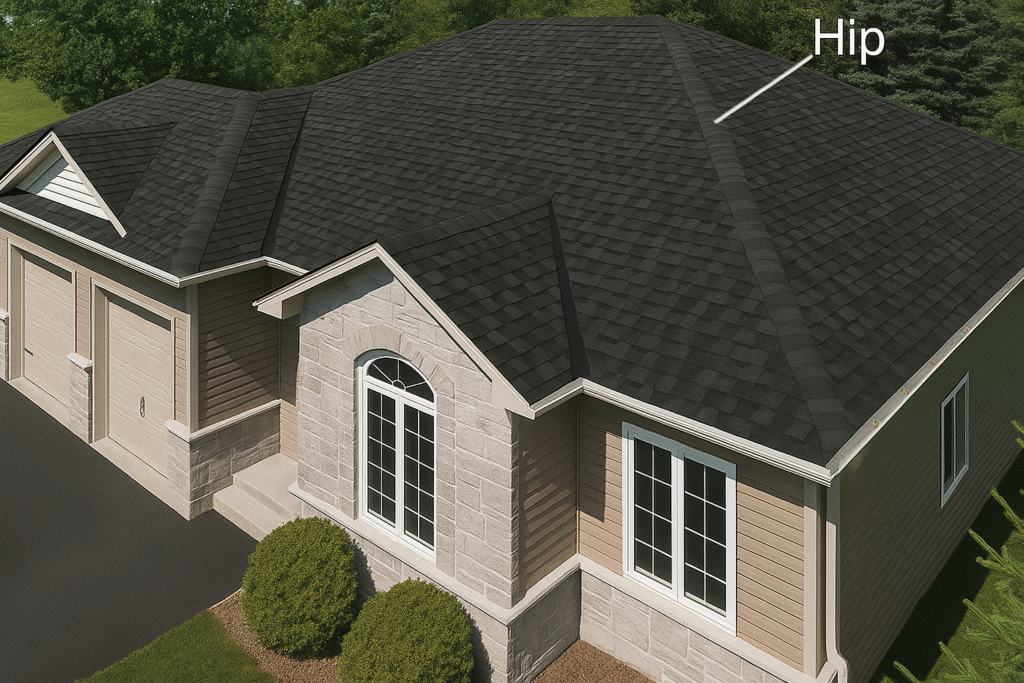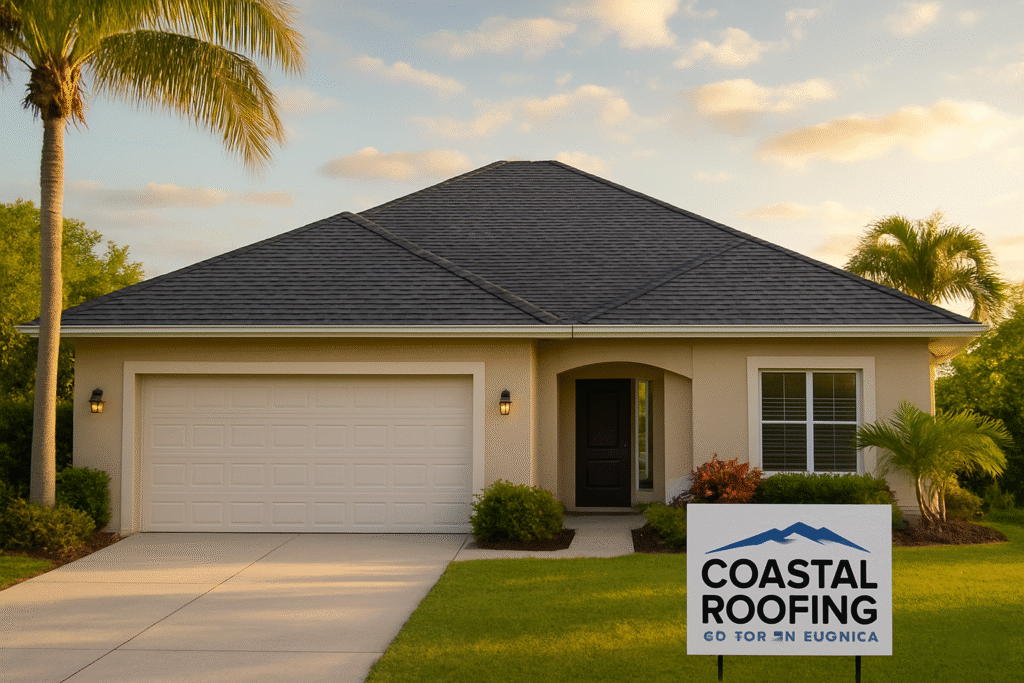Hip Roof vs. Gable Roof: Which Is Better for Florida Hurricanes?
Posted 9.12.2025 | 4 Minute Read

As a Florida homeowner, ensuring your home is ready for a hurricane is a top priority. While many factors contribute to a home’s storm resistance, one of the most important is the shape of your roof.
At Coastal Roofing of South Florida, we consistently see that homes with hip roofs perform significantly better than those with gable roofs after a major storm. This guide breaks down the practical differences so you can make an informed decision to protect your family and your investment.
What Is the Best Roof Shape for Hurricane Resistance?
A hip roof offers the best protection against hurricane-force winds. The reason is simple aerodynamics. A hip roof has four sloped sides that allow wind to flow up and over the structure smoothly, much like a modern car is designed to cut through the air. This self-bracing design distributes immense pressure evenly across the entire structure.
In contrast, a gable roof has large, flat ends that act like a giant sail, catching the wind and creating intense, focused pressure that can tear a roof apart.
How Do Hip and Gable Roofs Compare for Hurricane Safety?
Choosing the right roof involves balancing protection, cost, and long-term value. This table shows you exactly where each roof type wins and loses in a hurricane zone.
| Feature | Hip Roof (The Safer Choice) | Gable Roof (The Budget Option) |
| Wind Resistance | Excellent. The aerodynamic shape reduces peak wind pressures by up to 50%. | Poor. The flat ends catch wind, creating dangerous uplift forces that can lead to failure. |
| Structural Integrity | High. Its self-bracing geometry distributes wind loads evenly, preventing collapse. | Low. Stress is concentrated on the gable end walls, creating a critical single point of failure. |
| Initial Cost | Higher. The more complex design typically costs 15-20% more to build. | Lower. The simple, triangular design is cheaper and faster to construct. |
| Insurance Cost | Lower. Qualifies for significant wind mitigation discounts, saving you up to 32% on premiums. | Higher. The increased risk of storm damage leads to more expensive homeowners insurance. |
Why Is a Gable Roof So Dangerous in a Hurricane?
A gable roof is the roof shape most likely to be lifted off during a hurricane. It experiences nearly 60% more destructive force than a hip roof because of three key flaws:
- The “Sail Effect”: The large, flat ends catch wind, transferring enormous pressure directly to the roof’s connections.
- Concentrated Stress: All that force is focused on the end walls. If they fail, the entire roof can peel off in a domino effect.
- Dangerous Wind Vortexes: The sharp edges create powerful vortexes of swirling air, producing intense suction that easily rips off shingles and sheathing.
Is a Hurricane-Resistant Hip Roof Worth the Investment?

Yes. The long-term savings and security far outweigh the initial cost. The proof is in the aftermath of real storms. A FEMA analysis after Hurricane Ian found that homes with modern hip roofs experienced significantly less damage. This real-world performance directly impacts your wallet.
- Fewer Claims: Hip roofs generate 40-60% fewer wind damage claims than gable roofs.
- Insurance Savings: In South Florida, you can save $300-$900 annually on your homeowners insurance with a hip roof.
- Return on Investment: These savings typically recover the higher initial cost in just 8-12 years, all while providing superior protection.
When you factor in lower insurance premiums and fewer costly storm repairs, a hip roof is an investment in your home’s future.
How Can You Guarantee Your Roof Offers Maximum Protection?
Choosing a hip roof is the first step. Ensuring it’s built correctly is what truly keeps you safe. Maximum protection comes from combining the right shape with expert installation that meets or exceeds Florida’s strict building codes.
This includes using enhanced hurricane straps, a sealed roof deck to prevent water intrusion, and proper fastening techniques. Because a hip roof is more complex to build, the skill of your contractor is non-negotiable.
Your Solution: Invest in Proven Hurricane Protection

The data is clear: hip roofs are the superior choice for hurricane resistance in Florida. Reduced insurance costs and less storm damage make a hip roof a sound financial decision that protects both your property and your peace of mind.
For your next roof replacement or new construction project in South Florida, a hip roof is the smart investment. Contact Coastal Roofing of South Florida today for a comprehensive evaluation and your hurricane-resistant roof that can protect your home for years to come.
Recent Articles
